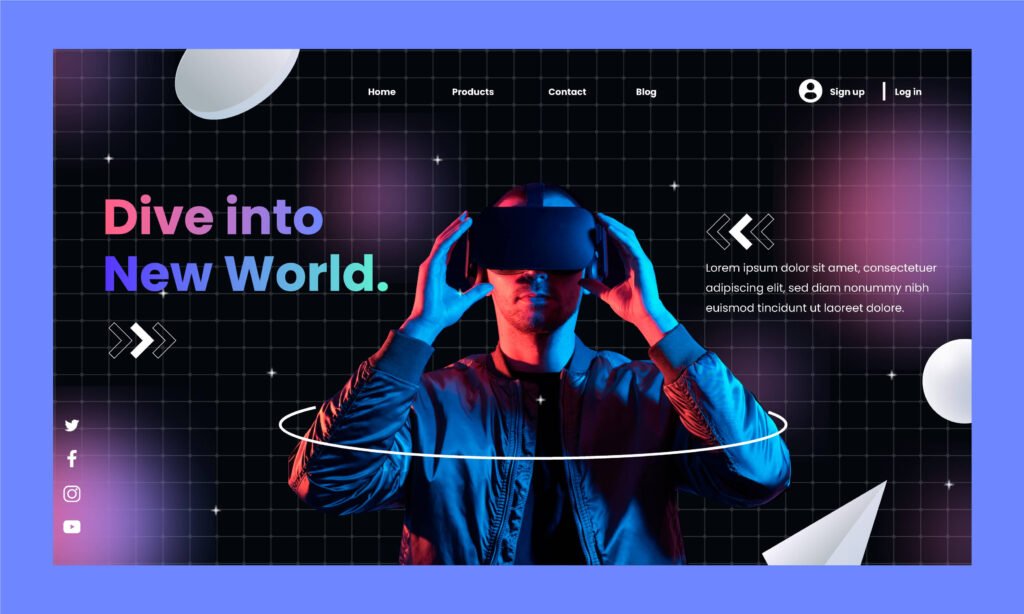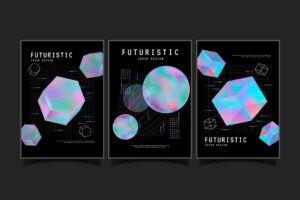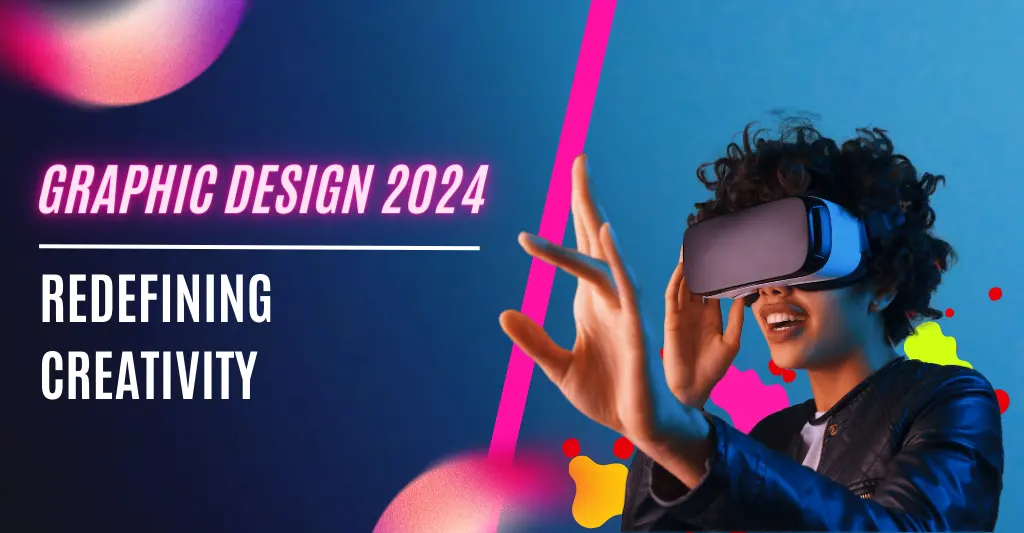In the dynamic world of graphic design, the ability to anticipate and embrace emerging trends is crucial for professionals dedicated to creating visually compelling content. As we step into the year 2024, we find ourselves at the crossroads of innovation and creativity, ready to explore the Graphic Design Trends that will shape visual communication in the coming months.
The canvas of graphic design is undergoing a transformative phase, driven by technological advancements, evolving cultural landscapes, and a growing emphasis on sustainability. This juncture signifies not just an evolution, but a revolution in how designers approach their craft. From immersive metaverse-inspired designs to a steadfast focus on sustainable practices, each trend contributes to reshaping the future of design.
Within these trends lie the keys to unlocking unparalleled creativity, engaging audiences on a deeper level, and building brands that resonate with the spirit of the times. In this article, we will unravel the layers of Graphic Design Trends in 2024, examining not only their aesthetic impact but also the profound implications they hold for the way we perceive, interact with, and consume visual content.
Join us on this captivating journey through the design landscape as we navigate the currents of innovation set to redefine the very essence of creativity in graphic design for the year 2024 and beyond.
Graphic Design in 2024
1. Metaverse-inspired Designs

One of the most prominent graphic design trends in 2024 is the influence of the metaverse on creative expression. As virtual and augmented reality technologies continue to advance, designers are leveraging these tools to craft immersive and engaging visual experiences. Metaverse-inspired designs not only captivate audiences but also open up new dimensions for storytelling and brand communication.
Benefits:
- Enhanced user engagement through immersive experiences: Metaverse-inspired designs create a more interactive and engaging user experience, capturing the audience’s attention and encouraging prolonged interaction with the content. This heightened engagement can lead to increased brand loyalty and a more memorable brand presence.
- Opportunities for brands to establish a strong digital presence: By embracing metaverse-inspired designs, brands can position themselves as forward-thinking and technologically adept. This can help in building a robust digital presence, especially crucial in an increasingly digital world, and attracting a tech-savvy audience.
- Increased interactivity, fostering a deeper connection with the audience: Metaverse-inspired designs often involve interactive elements that allow users to actively participate in the content. This fosters a deeper emotional connection between the audience and the brand, as users feel more involved and connected to the content they are interacting with.
2. Sustainable Design Practices
The global push towards sustainability has permeated the field of graphic design. In 2024, designers are integrating eco-friendly principles into their work, opting for sustainable materials, energy-efficient processes, and environmentally conscious themes. Sustainable design practices not only contribute to a greener planet but also resonate with a growing audience that prioritises ethical consumption.
Benefits:
- Positive brand image by aligning with environmental values: Adopting sustainable design practices contributes to a positive brand image, as consumers are increasingly valuing environmentally conscious brands. This alignment with eco-friendly values can enhance brand reputation and attract a socially responsible consumer base.
- Appeal to an eco-conscious audience: The global shift towards sustainability has created a consumer base that actively seeks products and services from environmentally responsible brands. By incorporating sustainable design practices, designers can appeal to this growing demographic, expanding their reach and market influence.
- Long-term cost savings through sustainable practices: While initially investing in sustainable practices may require some effort, in the long run, businesses can benefit from cost savings. Energy-efficient processes, reduced waste, and the use of sustainable materials can lead to lower operational costs, contributing to overall business sustainability.
3. Minimalistic and Functional Designs

In 2024, the design landscape is witnessing a return to minimalism, characterised by clean lines, simple shapes, and a focus on functionality. This design approach not only enhances visual clarity but also facilitates a seamless user experience. Minimalistic and functional designs enable brands to convey their messages effectively, eliminating unnecessary distractions and fostering a sense of sophistication.
Benefits:
- Improved user comprehension and navigation: Minimalistic and functional designs prioritise simplicity, making it easier for users to understand the content and navigate through it. This enhances the overall user experience by reducing cognitive load and improving usability.
- Timeless aesthetic appeal that transcends trends: Minimalistic designs often possess a timeless quality, as they rely on fundamental design principles rather than fleeting trends. This longevity ensures that the visual appeal of the design remains relevant and appealing over an extended period, avoiding the need for frequent redesigns.
- Faster loading times for digital content: Simplicity in design often translates to lighter and more streamlined digital assets. This results in faster loading times for websites and other digital content, contributing to a smoother and more enjoyable user experience. Improved loading times also positively impact SEO and user retention.
Learn more about Minimalist Website Design
4. 3D and Holographic Elements

Graphic designers are pushing the boundaries of two-dimensional visuals by incorporating 3D elements and holographic effects into their work. This trend adds depth and dynamism to designs, creating a more engaging and memorable user experience. From product presentations to website interfaces, the integration of 3D and holographic elements injects a sense of modernity and innovation.
Benefits:
- Increased visual appeal and engagement: The incorporation of 3D elements and holographic effects adds a layer of visual intrigue to designs, capturing the audience’s attention and creating a more immersive experience. This heightened visual appeal can lead to increased user engagement and a more memorable brand impact.
- Enhanced storytelling capabilities through dynamic visuals: 3D and holographic elements provide designers with tools to tell more compelling and dynamic stories. Brands can use these technologies to showcase products, convey narratives, and create a more immersive brand experience that resonates with the audience on a deeper level.
- Differentiation in a crowded digital landscape: In a digital world saturated with visual content, the use of 3D and holographic elements allows brands to stand out and differentiate themselves from competitors. This uniqueness can be a valuable asset in capturing the audience’s attention and fostering brand recall.
5. Augmented Reality (AR) in Graphic Design
Augmented Reality is taking centre stage in 2024, revolutionising the way users interact with visual content. Graphic designers are leveraging AR to create interactive and personalised experiences, blurring the lines between the digital and physical worlds. This trend opens up exciting possibilities for brands to connect with their audience in novel and memorable ways.
Benefits:
- Enhanced user engagement through interactive content: AR in graphic design enables the creation of interactive and dynamic content, providing users with an engaging and participatory experience. This heightened engagement can lead to increased time spent interacting with the content and a more profound connection with the brand.
- Increased brand visibility through AR-powered marketing campaigns: Brands can leverage AR to create innovative marketing campaigns that enhance brand visibility. Whether through AR advertisements, interactive packaging, or location-based AR experiences, brands can connect with their audience in novel ways, increasing overall visibility and brand recognition.
- Novel and innovative approaches to storytelling: AR allows designers to tell stories in innovative ways by blending digital elements with the physical world. This opens up new possibilities for narrative exploration, creating unique and memorable experiences that leave a lasting impression on the audience.
Conclusion
As we delve into 2024, graphic design is undergoing a transformative phase, driven by technological advancements, sustainability concerns, and a quest for meaningful user experiences. Embracing these Graphic Design Trends in 2024 not only allows designers to stay relevant, but also empowers them to shape the visual narrative of the future. Whether inspired by the metaverse, sustainable practices, minimalism, 3D elements, or augmented reality, the key is to adapt, innovate, and push the boundaries of creativity in the ever-evolving world of graphic design.
You might also like:
The Art of Effective Branding and Graphic Design
Graphic Design: Elevate Your Brand with Striking Visuals
Unveiling the Secrets of Our Top Graphic Design Solutions
Learn more about our Graphic Design Solutions
Helpful Source: Metaverse and its impact on graphic design


